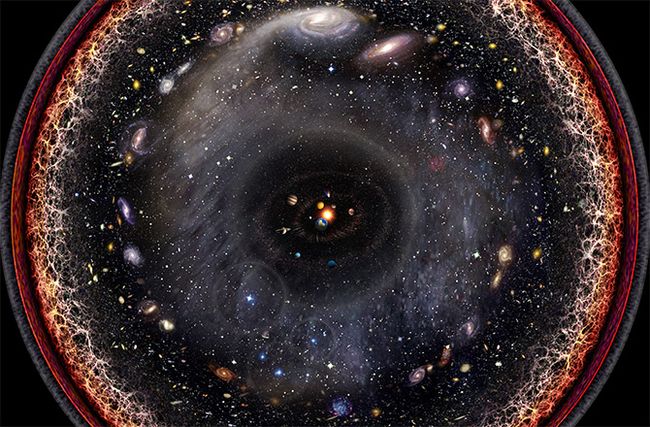
1. How big is the universe?
2. Does it really ‘matter’?
There are precisely 3,840,101 inhabited planets within this great universe, which bears the noble name of Nebadon. Nebadon is currently in an extremely active stage of evolution and progress toward light and life, the oldest of which inhabited planets are 200 billion years old.
Nebadon was physically assembled out of the Andronover nebulae; the nucleus of the physical system to which our sun and its associated planets belong is the center of the onetime Andronover nebula. This former spiral nebula was slightly distorted by certain gravity disruptions associated with the events which were attendant upon the birth of our solar system, and which were occasioned by the near approach of a large neighboring nebula. This near collision changed Andronover into a somewhat globular aggregation but did not wholly destroy the two-way procession of the suns and their associated physical groups. Our solar system now occupies a fairly central position in one of the arms of this distorted spiral, situated about halfway from the center out towards the edge of the star stream.
Antares is largest star in Nebadon.
The precise location and geological operating conditions of each celestial body in Nebadon, from the largest down to the smallest, as well as a complete accounting of the myriad life forms in development upon each individual sphere, are so fully known by God’s cosmic administration, so carefully monitored, so tenderly provided for, and so intimately loved it would be as if each one was the only one in existence.
The same goes for every single individual in every single progressing society on all 3,840,101 inhabited planets within Christ Michael’s vast universe, which individuals are His greatest value.
That’s how big the universe is and that’s how much it matters.
Message by a Reader
Submitted to Voyages of Light
How Big is the Universe? | Reader
![How Big is the Universe? | Reader]() Reviewed by TerraZetzz
on
8/01/2019 10:38:00 PM
Rating:
Reviewed by TerraZetzz
on
8/01/2019 10:38:00 PM
Rating:




